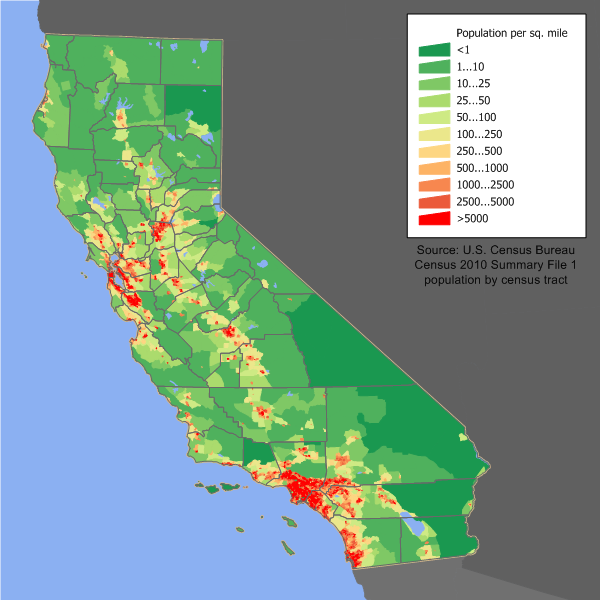 By SILVIA ZINETTI
By SILVIA ZINETTI
In my previous post I introduced the concept of Community Choice Energy (CCE) (1) business model and how cities and local governments in California are gaining momentum in leading the way towards sustainable energy transition at the local level.
There is definitely an interesting situation. Contrary to what the federal government is doing, California is moving forward with an increasing amount of renewable energy added to its portfolio standard, and doubling its energy efficiency goals. According to data collected by Bloomberg, a significant part of the U.S. growth can be tracked to California laws promoting clean energy. Indeed, ‘California clean energy companies reported annual revenue growth of 26 percent and they turned more revenue into profit with an average gross margin of 46 percent’.
In this suitable window, CCE model is gaining momentum by creating a domino effect. With eight operational (2) CCEs, eight emerging CCEs (3), and more than twenty cities and counties currently exploring this opportunity, the CCE model is booming all around California.
Business of Local Energy Symposium
On Friday, May 5, 2017, I attended the Business of Local Energy Symposium in Long Beach, California. The event, organized by the Center for Climate protection with the cooperation of the Local Government Commission and the Local Government Sustainability and Energy Coalition, gathered more than 400 people including elected officials, businesses, and community leaders with the aim to accelerate California’s shift to a clean energy economy. It also discussed about current energy policy, regulations, markets, and technology. I was amazed to see how many new cities representatives, and interested parties were present at the event.
The key speaker, Senator Kevin de Leon, President Pro Tempore, California State Senate stated that “the economy and the environment are on the same path”, and California is proving it. The right policies and regulatory settings, he continued, help stimulating the clean economy and attract investments for the development of new and efficient technology.
Why would cities embark in this new journey?
CCE is a great tool for cities and local government to achieve efficiency, resiliency and sustainability. Furthermore, it stimulates technological innovation at the local level and at the same time is also an economic development tool. Sonoma Clean Power (SCP) for instance registered in only few years an increase in net position of $1.1 million in 2014, $13.8 million in 2015, and $26.8 million in 2016. The 2015 validated results include $48 million in customer on-bill savings, 2 billion kilowatt-hours of clean energy delivered and $690,000 in payments to customers for making extra solar energy. Marin Clean Energy (MCE) also registered an increase in net position of $1.6 million in 2014, $3.7 million in 2015, and $16.3 million in 2016. Results include $75,000 allocated for Low Income Solar Rebates (2012-2017), 122,102 Metric tons of GHG eliminated (2010-2014), 7,765,057 gallons of water saved through energy efficiency programs, and 2,787 jobs supported in California.
Another great example comes from the City of Lancaster, which started a CCE program, named Lancaster Choice Energy (LCE) as a single municipality. The city has the ambitious goal to achieve a sustainable net-zero energy community and in only few years of LCE operations generated more than 1,000 local jobs, has 77.4 MW of solar PV citywide constructed and operational, and streamlined solar PV inspections process. Furthermore, the City partnered in a project with Chinese manufacturing leader BYD and KB Home to design and create an affordable green energy home or “Home of the Future,” with the use of BYD solar panels, LED lighting, residential energy storage and energy efficiency technologies. In 2013, BYD opened its first two U.S. manufacturing plants in Lancaster to produce electric city buses and large-scale batteries, thus creating local jobs.
CCEs are a perfect example of how communities can support 100% clean energy goals, create local green jobs, promote energy technology innovation, and attain greater control over its energy sources while deciding its own energy future.
Whilst there are many reasons why a city or a local government should start a CCE, another relevant question would be as follows:
Why a city or local government should not start a CCE?
I personally don’t see any good reason why not to start one. In California the model works, delivers clean energy to residents and businesses at stable, competitive rates, and most importantly the money residents and businesses pay for their electricity stays local. Moreover, CCE is an effective option for cities to reduce GHG emissions in a big way, and function as a technology incubator, while creating local green jobs.
One of the key advantages of CCE is that it reinvests the profits into the community, not only providing project financing to local clean energy investments and energy efficiency measures, but also providing several benefits to its residents and businesses and thus improving their quality of life. Most importantly, CCEs decide where to focus its investments and target areas based on the community needs. “CCE is responsive to local needs”, said Geof Syphers, Sonoma Clean Power’s Chief Executive Officer. This is very important for the smart cities of the future, which will be more inclusive, democratic and increased citizens’ participation in the decision making process. In California CCEs are focusing on three main aspects: renewable energy, energy efficiency, and sustainable mobility (e.g. EV charging stations).
Cities and local governments in California understood what a great opportunity has been given to them, and they are starting taking advantage of it. That said, there are some important risks that need to be assessed properly before starting a CCE. Some common risks include over-procurement, high prices for the energy procurement and customers’ opt-out rate. Cities normally perform a feasibility study to assess those risks and other potential ones while exploring the CCE option.
CCE projections to 2020
According to the Center for Climate Protection’s projections to 2020, about 18 millions people in California will be served by CCEs.
CCEs will save an estimated cumulative greenhouse gas emissions by 2020 of about 5.5 million metric tons. This numbers exceed the requirements that investor-owned utilities have to meet.
CCE customers will save approximately $190 million per year by 2020.
And my takeaway from the Symposium is that we are going to see many other CCEs coming up in the near future in California.
Can this knowledge be transferred to Europe?
The EU in its “Winter Package” sets ambitious goals in terms of leadership in clean energy technology and innovation, energy efficiency, industry competitiveness, and transition to a low carbon society. With this regard, new approaches and business models are definitely needed to help the EU and the Member States achieving those objectives and CCE could serve for this purpose (4). The knowledge can be certainly transferred. However, due to very different electricity market conditions in the EU, some research should be done to assess the feasibility of CCE and its potential successful replication in Europe. CCE could be part of Horizon 2020 research programme, for instance under the research area of energy, environment and climate action, or as part of the European Innovation Partnership on Smart Cities and Communities.
This is a great time and perfect window of opportunity for cities and local governments to take the lead on the sustainable energy revolution at the local level.
Notes:
(1) Also known as Community Choice Aggregation (CCA)
(2) Apple Valley Choice Energy, Clean Power San Francisco, Lancaster Choice Energy, Marin Clean Energy, Peninsula Clean Energy, Redwood Coast Energy Authority, Silicon Valley Clean Energy, Sonoma Clean Power
(3) Central Coast Power, East Bay Community Energy, Los Angeles Community Choice Energy, Monterey Bay Community Power, San Jose Clean Energy, Sierra Valley Energy Authority, South Bay Clean Power, Valley Clean Energy Alliance
(4) A similar phenomenon is happening in Germany called re-municipalisation of energy, which differs from CCE (defined as a hybrid approach) because of its vertical value chain approach.
Editor’s note: This post originally appeared on Energy in Demand: https://energyindemand.com/2017/05/13/blog-from-silvia-zinetti-the-community-choice-energy-model-is-gaining-momentum-in-california-can-this-knowledge-be-transferred-to-europe/
Silvia Zinetti is a sustainable energy expert and policy advisor, based in Arlington, Virginia.
Leaders in Energy is building a community of engaged leaders to create a sustainable energy system, economy, and world. The three main areas of action are the green economy, sustainable communities, and multigenerational leadership. With operations in Metro Washington DC, we’ve built a base that spans most major metropolitan areas and over 100 countries. More information is available at https://www.leadersinenergy.org and in the Leaders in Energy Research, Communication, Policies & Analysis (LERCPA) LinkedIn group.
Leaders in Energy will be conducting its 5th annual Green Jobs Forum on August 16th, 2018. See more details here.







Leave a Reply